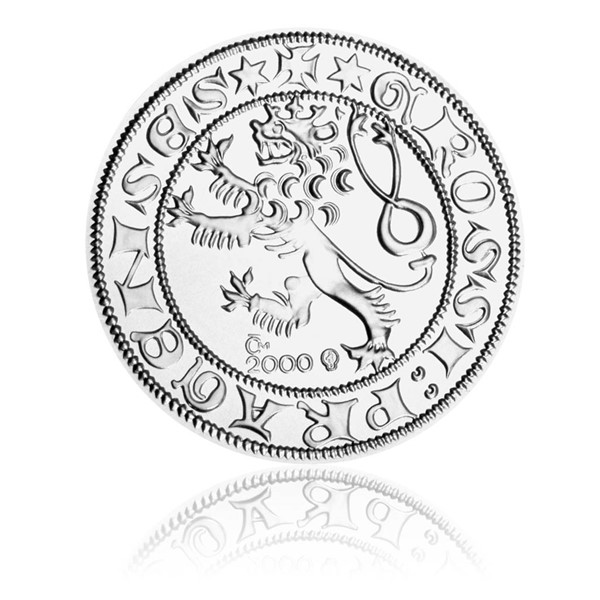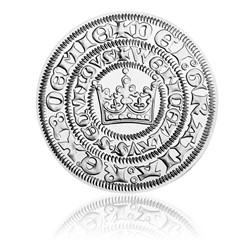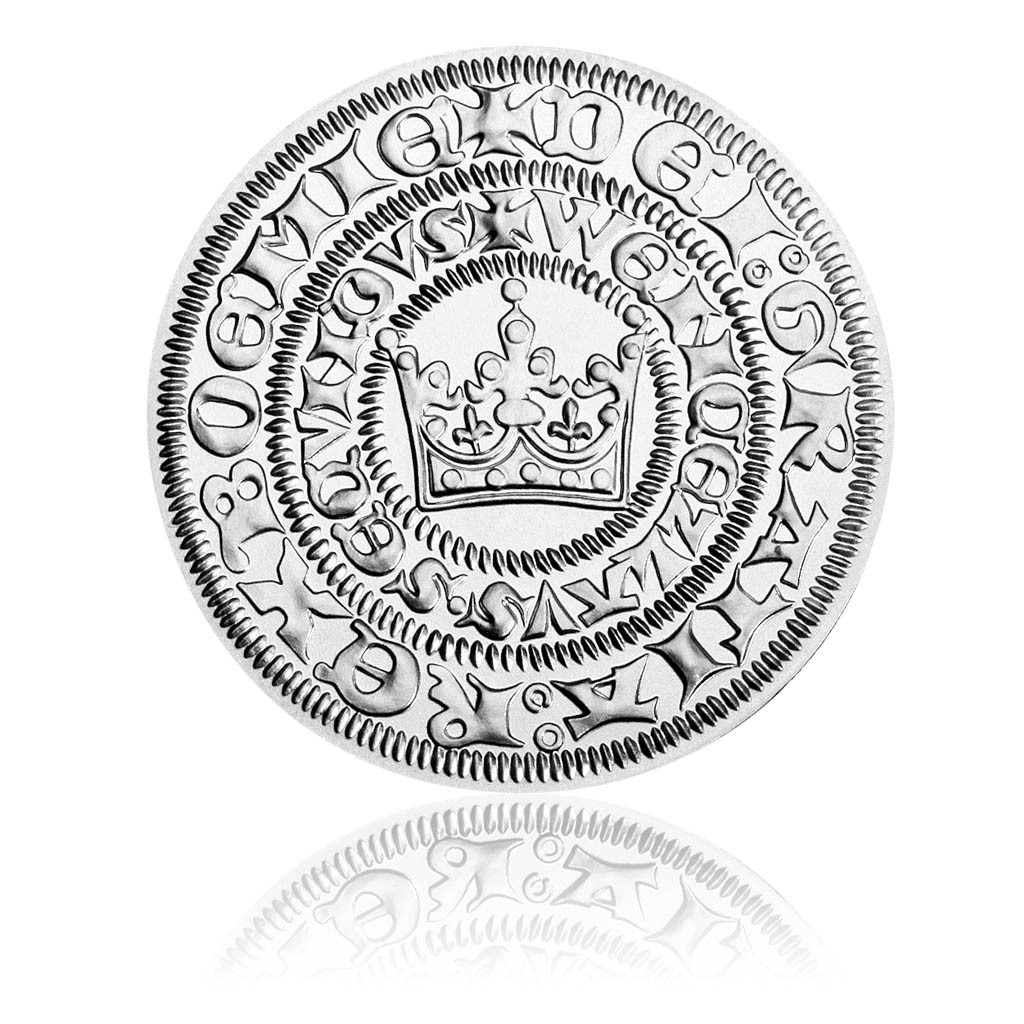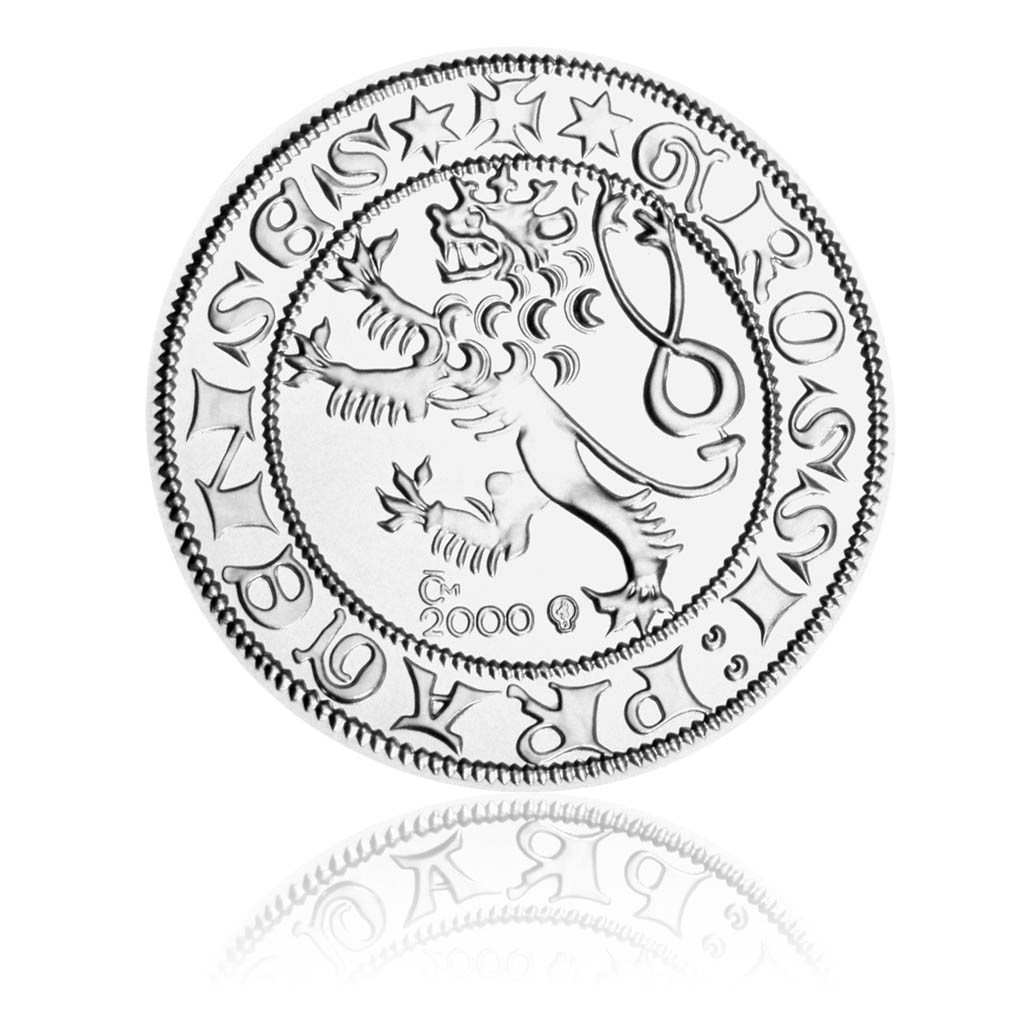Replica of Prague groschen of Wenceslas II period standard
Personal pickup at the store
Replica of Prague groschen of Wenceslas II period standard
Minting of this popular Czech silver coin started around 1300 as a result of the coinage reform of the Czech and Polish king Wenceslas II of the Přemyslids. It was made possible by discoveries of rich silver mines in the vicinity of Kutná Hora. The coinage reform was part of the new mining code (in Latin Ius regale montanorum) co-authored by Italian financial experts Rinieri, Appardo and Cino. The reform abolished use of uncoined silver for payments, introduced its obligatory exchange for minted coins and, at the same time, ended the circulation of the current coins – phenigs and bracteats. The Prague groschen, which was supposed to weigh 3.95 g, was designed by the pattern of so-called Touraine groschen that was struck in 1266 in Tours by French king Louis IX (1226–1270). Small coins called parvus were simultaneously introduced and their proportion to the Prague groschen was firmly fixed at 1/12. The Prague groschen struck until 1547 was very popular through ages and it has survived in the names of coins and money in general upto the present day. The Prague groschen were first imitated in the neighbouring countries as Meissen, Polish, Hungarian groschen. Because of their popularity the name or designation of groschen gradually changed to “bohem, czechi, or czech“ and was used for grosechen coinage or currency in general. Groschen for example survived until the introduction of euro as small change in Austria, they are still used in Poland and the name groši [hroši] is a general expression for money in Ukraine until now.
 čeština
čeština
 slovenčina
slovenčina
 english
english





